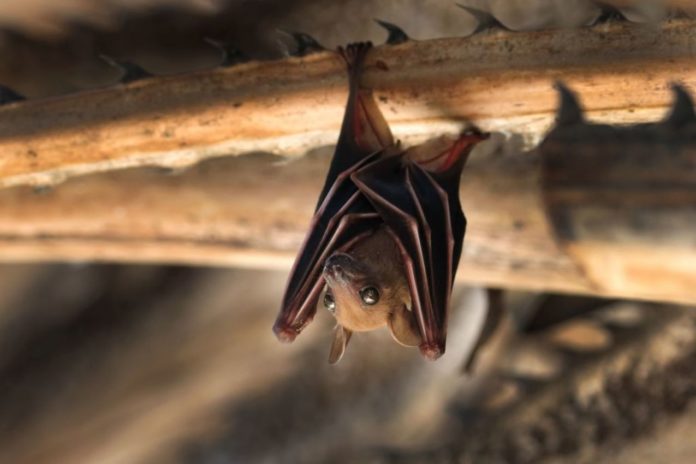According to a recent joint study from the University of East Anglia, ZSL (Zoological Society of London), and Public Health England, a coronavirus similar to the virus that causes Covid-19 in people has been discovered in UK horseshoe bats (PHE).
However, until it mutates, there is no indication that this new virus has been transmitted to people or will be in the future.
Researchers from the University of East Anglia gathered faeces samples from more than 50 lesser horseshoe bats in Somerset, Gloucestershire, and Wales and submitted them to Public Health England for viral investigation.
- Brief Anger Hampers Blood Vessel Function Leading to Increased Risk of Heart Disease and Stroke – New Study
- New Blood Test Pinpoints Future Stroke Risk – Study Identifies Inflammatory Molecules as Key Biomarker
- Enceladus: A Potential Haven for Extraterrestrial Life in its Hidden Ocean Depths
- New Experiment: Dark Matter Is Not As ‘DARK’ As All We Think
- Scientists in Fear of This New Predator From Red Sea Eating Native Species in Mediterranean
Horseshoe bats are found across Europe, Africa, Asia and Australia and the bats we tested lie at the western extreme of their range.
said Prof Diana Bell, a specialist in emerging zoonotic diseases at the University of East Anglia’s School of Biological Sciences.
Similar viruses have been found in other horseshoe bat species in China, South East Asia and Eastern Europe.
A new coronavirus, dubbed ‘RhGB01,’ was discovered in one of the bat samples after genome sequencing.
It is the first time a sarbecovirus (a coronavirus linked to SARS) has been detected in a lesser horseshoe bat and the first time it has been detected in the United Kingdom.
According to the researchers, these bats probably likely harboured the virus for an extended period of time. And it has been discovered now since they are being tested for the first time.
These bats will almost certainly have harboured this virus for a very long time — probably many thousands of years. We didn’t know about it before because this is the first time that such tests have been carried out in UK bats.
Notably, until it mutates, this new virus is unlikely to pose a direct threat to people.
Prof Diana Bell added:
Research into the origins of SARS-CoV-2, the virus that causes Covid-19 in humans, has focussed on horseshoe bats — but there are some 1,400 other bat species and they comprise 20 per cent of known mammals.
Prof Andrew Cunningham, from the Zoological Society of London, stated:
Our findings highlight that the natural distribution of sarbecoviruses and opportunities for recombination through intermediate host co-infection have been underestimated.
“This UK virus is not a threat to humans because the receptor binding domain (RBD) — the part of the virus that attaches to host cells to infect them — is not compatible with being able to infect human cells.
But the problem is that any bat harbouring a SARS-like coronavirus can act as a melting pot for virus mutation. So if a bat with the RhGB01 infection we found were to become infected with SARS-CoV-2, there is a risk that these viruses would hybridise and a new virus emerge with the RBD of SARS-CoV-2, and so be able to infect people.
Prof Bell added:
Anyone coming into contact with bats or their droppings, such as bat rescuers or cavers, should wear appropriate PPE — in order to reduce the risk of a mutation occurring.
“We need to apply stringent regulations globally for anyone handling bats and other wild animals,” she added.
The new virus is classified as a sarbecovirus, a subtype of coronaviruses that includes SARS-CoV-2 (which caused the current epidemic) and SARS-CoV-1 (responsible for the initial 2003 SARS outbreak in humans).
Further research revealed that the virus’s closest cousin was identified in a Blasius’s bat in Bulgaria in 2008, when it was compared to viruses reported in other horseshoe bat species in China, Southeast Asia, and Europe.
- Brief Anger Hampers Blood Vessel Function Leading to Increased Risk of Heart Disease and Stroke – New Study
- New Blood Test Pinpoints Future Stroke Risk – Study Identifies Inflammatory Molecules as Key Biomarker
- Enceladus: A Potential Haven for Extraterrestrial Life in its Hidden Ocean Depths
- New Experiment: Dark Matter Is Not As ‘DARK’ As All We Think
- Scientists in Fear of This New Predator From Red Sea Eating Native Species in Mediterranean
Ivana said:
More than anything, I’m worried that people may suddenly start fearing and persecuting bats, which is the last thing I would want and would be unnecessary. As like all wildlife, if left alone they do not pose any threat.
Image Credit: Getty
